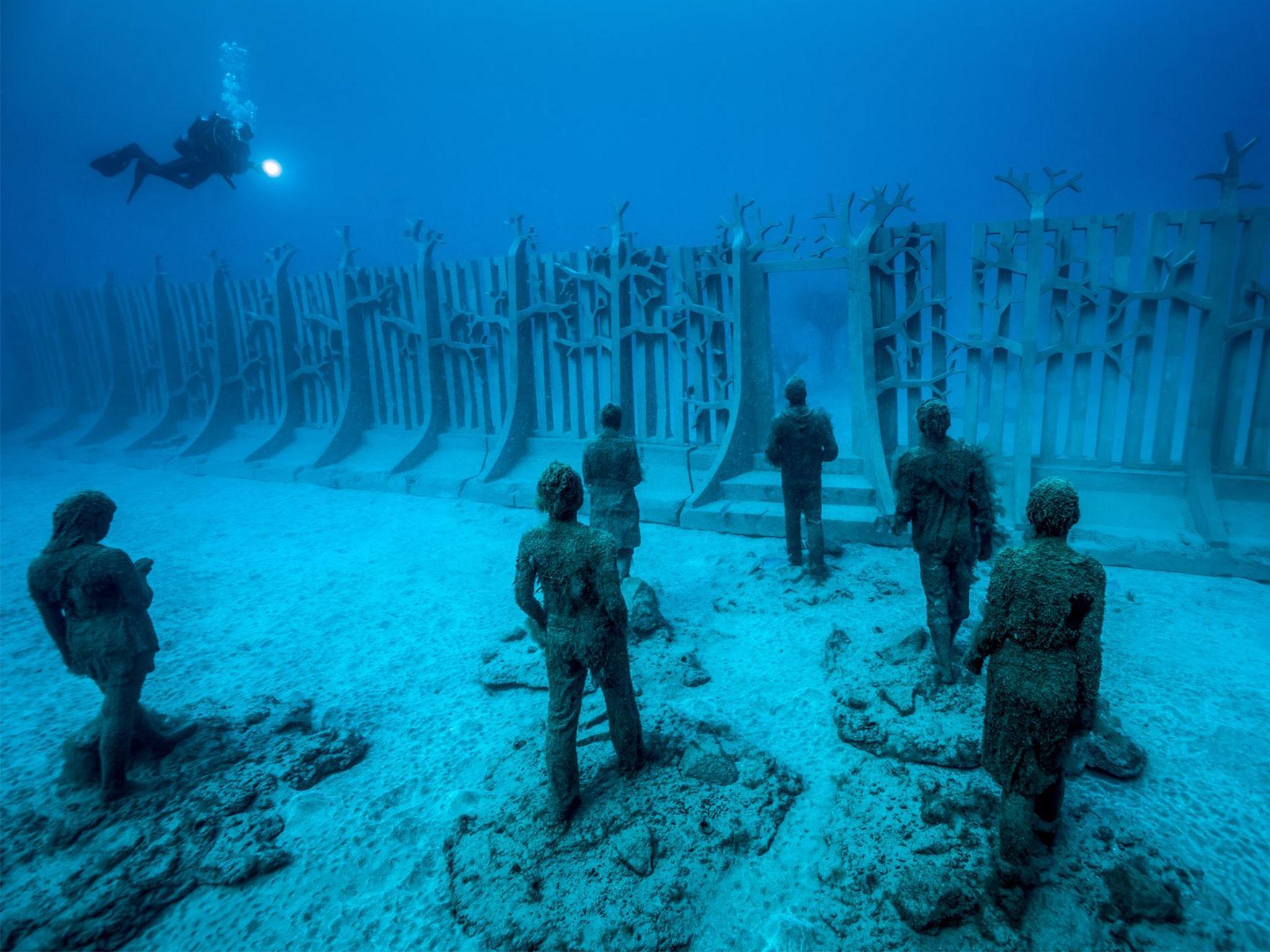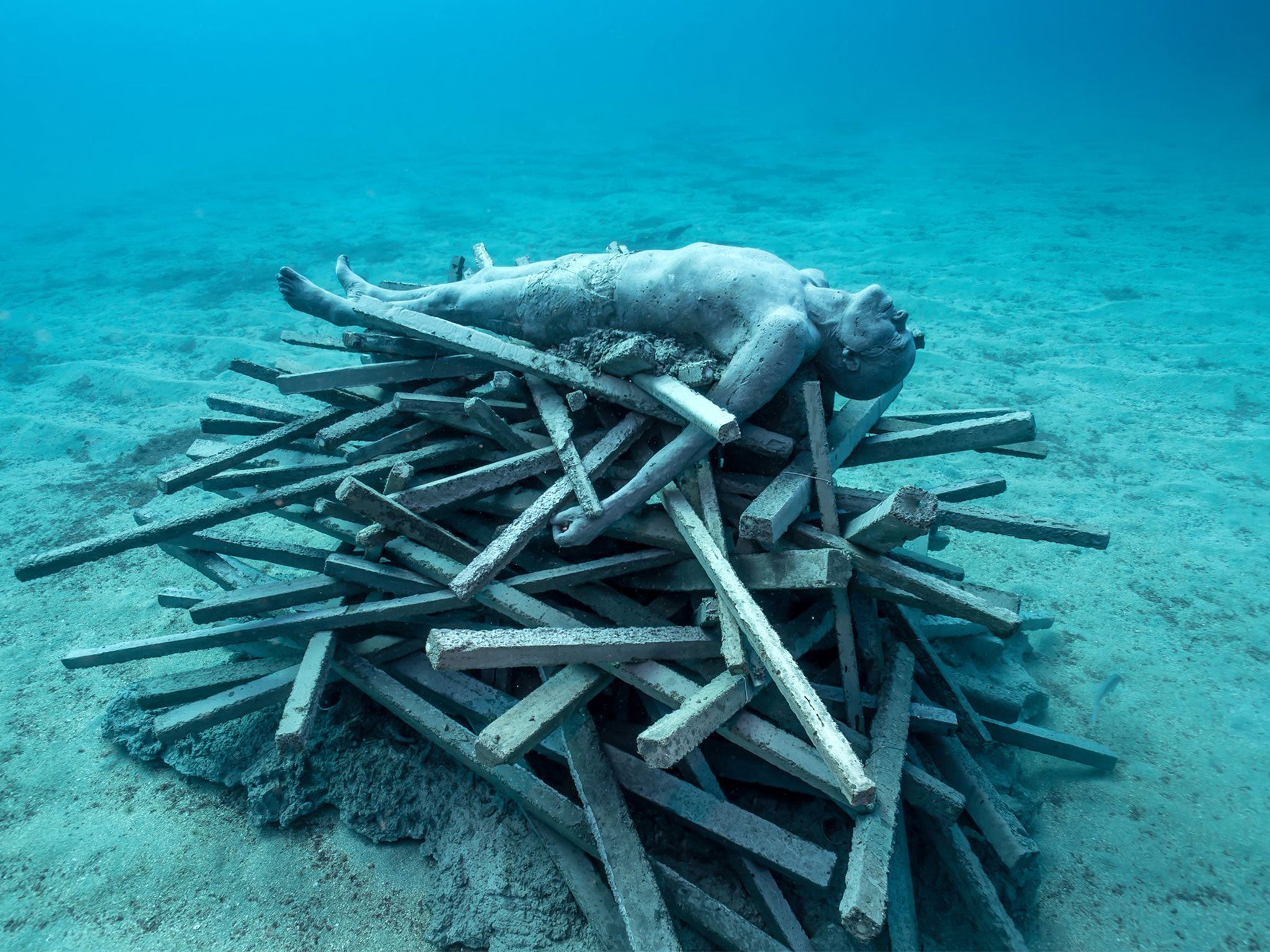Inside Europe's first underwater museum, where climate change cannot be ignored
Museo Atlantico, 15 metres under the sea in Lanzarote, contains 12 installations drawing attention to global issues such as climate change, conservation and migration

Your support helps us to tell the story
From reproductive rights to climate change to Big Tech, The Independent is on the ground when the story is developing. Whether it's investigating the financials of Elon Musk's pro-Trump PAC or producing our latest documentary, 'The A Word', which shines a light on the American women fighting for reproductive rights, we know how important it is to parse out the facts from the messaging.
At such a critical moment in US history, we need reporters on the ground. Your donation allows us to keep sending journalists to speak to both sides of the story.
The Independent is trusted by Americans across the entire political spectrum. And unlike many other quality news outlets, we choose not to lock Americans out of our reporting and analysis with paywalls. We believe quality journalism should be available to everyone, paid for by those who can afford it.
Your support makes all the difference.One of Europe’s most hotly anticipated art museums to date is now complete and open for public viewing – but visitors will need to bring a snorkel.
The Museo Atlantico (Atlantic Museum), located in the Canary Islands off the coast of Lanzarote, features more than 300 human sculptures created by British eco-artist Jason deCaires Taylor.
Submerged at depths of 15 metres on the ocean floor of Las Coloradas bay, the sculptures are only accessible to scuba divers and snorkelers.
The project, which has taken three years to complete, aims to create a visual dialogue between art and nature – the figures helping to form part of an artificial reef which will act as a breeding site for local species of fish and plants.
A graduate of University of the Arts, London (then the London Institute of Arts), Mr deCaires Taylor has worked on a number of similar large-scale underwater projects including the world’s first underwater sculpture park in Grenada, which opened in 2006.
While the Museo Atlantico was first opened in March last year, it is only now the project is complete with all figures submerged.

“The whole idea was for it to become a portal to another world,” Mr deCaires Taylor told CNN. “I want it to inspire people to understand more about our oceans and the threats facing them.”
Positioned in several groupings, many of the statues were cast from real people. According to the artist, each installation aims to draw attention to global issues such as climate change, conservation and migration.

The largest piece, ‘Crossing The Rubicon’, is made up of a group of 40 people walking blindly towards a gateway in a 30-metre long barrier.
Some are shown to be taking selfies, and others engrossed in their mobile phones – a statement the artist says denotes mankind’s attitude towards climate change.
Another piece called ‘The Portal’ depicts a hybrid animal-human sculpture looking into a large square mirror, which reflects the moving surface of the ocean.
The concept was designed to portray a looking glass into another world and is elevated on a series of cacti that are designed to attracted octopuses, sea urchins and fish.
The museum is placed across 50m squares of sand and is built with pH-neutral materials designed to be environmentally harmless.
Join our commenting forum
Join thought-provoking conversations, follow other Independent readers and see their replies
Comments